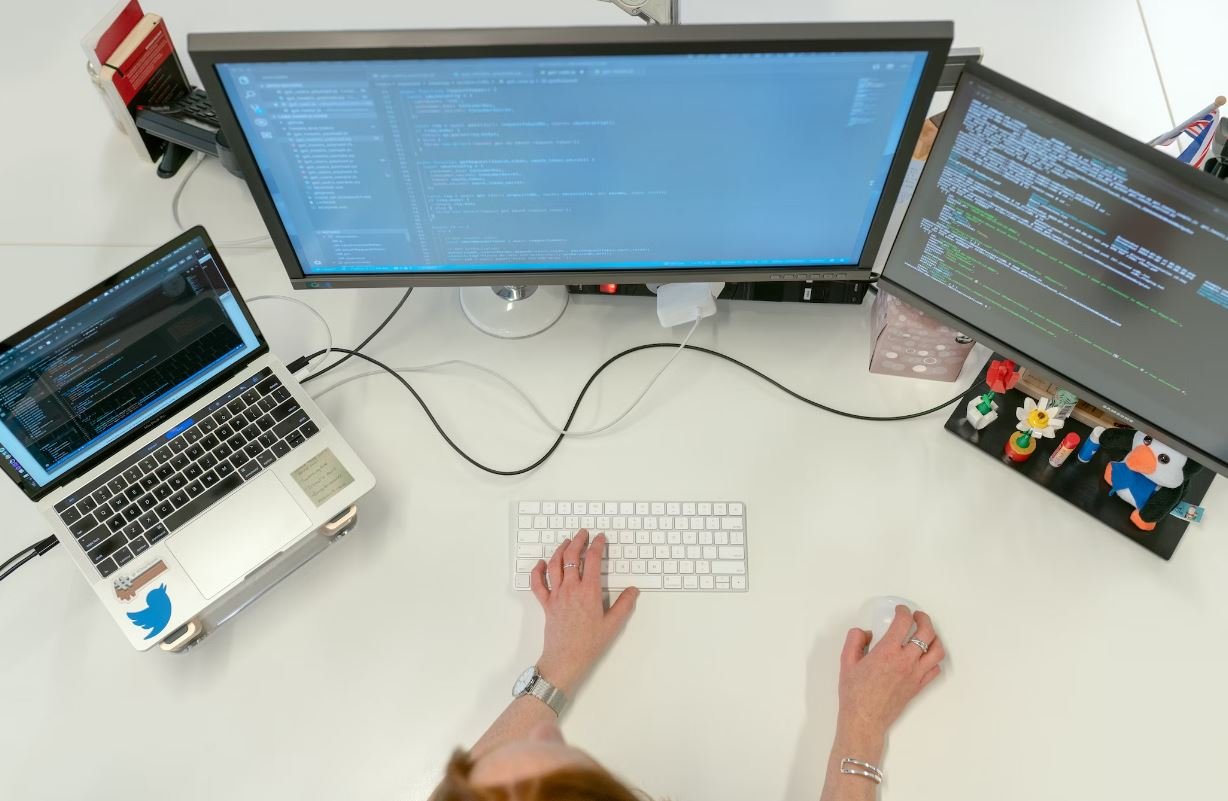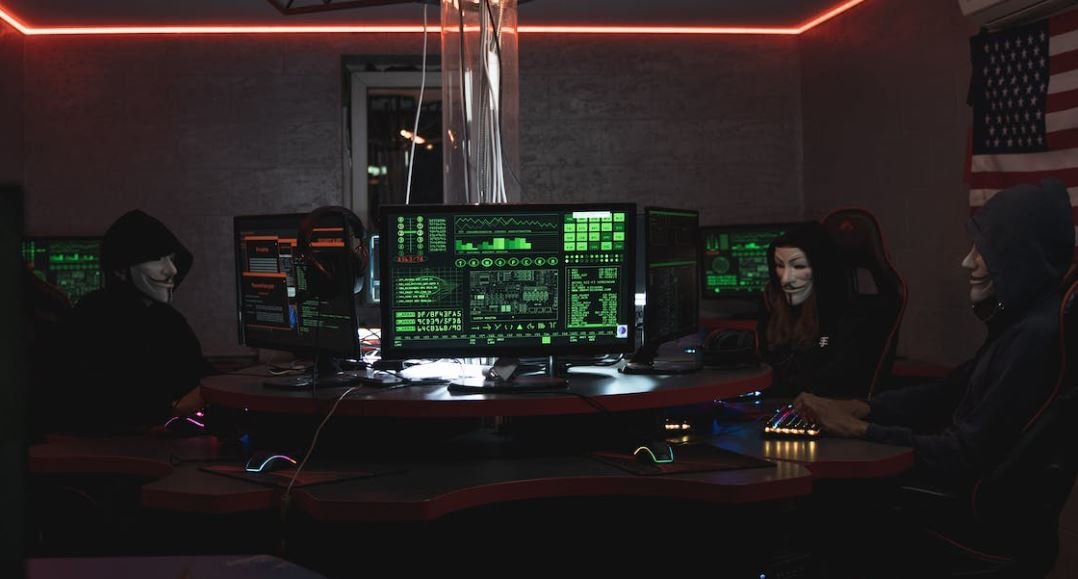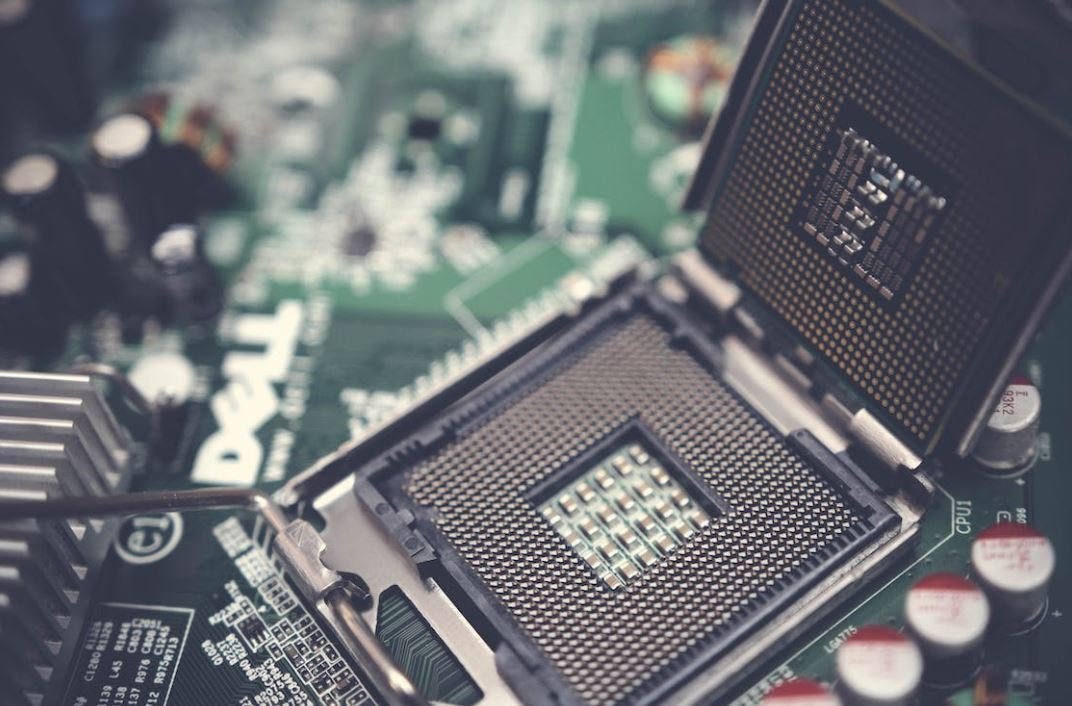Deepfake With AI
Deepfake technology, fueled by the advancements in artificial intelligence (AI), is becoming increasingly prominent in today’s digital landscape. This technique, which involves creating realistic but fake videos by superimposing one person’s face onto another person’s body, has raised concerns about the potential for misinformation, fraud, and violation of privacy. As deepfake technology continues to evolve, it is crucial to understand its implications and develop appropriate safeguards.
Key Takeaways
- Deepfake technology uses AI to create highly convincing fake videos.
- It raises concerns about misinformation, fraud, and privacy violations.
- Regulating deepfake technology is challenging due to constantly evolving techniques.
- Education and awareness are vital in combating the spread of deepfake content.
The Evolution of Deepfake Technology
Deepfake technology has witnessed significant advancements in recent years, thanks to the progress in AI algorithms and computing power. Early deepfakes were relatively easy to detect due to their visual artifacts and inconsistencies. However, with the introduction of sophisticated deep learning models such as Generative Adversarial Networks (GANs), deepfake videos have become more convincing and harder to distinguish from real footage. *Artificial intelligence has played a pivotal role in pushing the boundaries of deepfake technology.*
The Implications of Deepfake Technology
Deepfakes pose a range of implications, both societal and individual. On the societal level, deepfake videos can be used to spread false information, manipulate public opinion, and damage the reputation of individuals or organizations. Individually, innocent individuals can fall victim to deepfake fraud, where their identity is impersonated for malicious purposes. *The potential harms of deepfake technology extend beyond mere entertainment value.*
Combating Deepfake Misinformation
The fight against deepfake misinformation requires a multi-faceted approach involving technology, regulation, and education. It is crucial to distinguish deepfakes from real videos through advanced AI algorithms capable of detecting signs of manipulation. Additionally, legal frameworks and industry standards play a crucial role in regulating the creation and dissemination of deepfake content. *Creating a comprehensive defense against deepfake misinformation is an ongoing challenge for researchers and policymakers alike.*
Table 1: Deepfake Detection Techniques
| Technique | Description |
|---|---|
| Face Fusion | Combines elements of two faces to create a synthetic result. |
| Eye Blinking | Analyzes eye movement and blinking patterns to identify discrepancies. |
| Speech Analysis | Examines audio characteristics to detect manipulated speech. |
Preventing Deepfake Fraud
Protecting individuals from falling victim to deepfake fraud requires a combination of awareness and technological defenses. Education about the existence and impact of deepfake technology is vital for individuals to be cautious and vigilant. Advances in AI can also assist in developing robust authentication methods, ensuring that individuals are not tricked by fake identities. *Staying ahead of deepfake fraud is crucial for safeguarding individuals’ trust and privacy.*
Table 2: Examples of Deepfake Incidents
| Date | Incident |
|---|---|
| 2019 | A deepfake video of a high-profile politician went viral, spreading false information about their actions. |
| 2020 | A company executive’s voice was convincingly deepfaked to scam the organization’s employees into transferring funds to a fraudulent account. |
| 2021 | A deepfake video of a celebrity was released, sparking controversy and damaging their public image. |
Regulating Deepfake Technology
The regulation of deepfake technology is a complex task, as techniques are constantly evolving and new challenges emerge. Striking the right balance between freedom of expression, protection against harm, and privacy concerns is essential. Governments, tech companies, and researchers need to collaborate to develop and implement appropriate measures. *Crafting effective regulations for deepfake technology remains an enduring process.*
Table 3: Countries with Deepfake Regulations
| Country | Regulation Highlights |
|---|---|
| United States | Several states have passed laws criminalizing the creation and distribution of deepfake content without consent. |
| China | Has implemented strict measures to combat deepfakes, including mandatory disclosure labels on synthetic videos. |
| EU Member States | European countries are actively working on proposed regulations to address deepfake-related challenges. |
In conclusion, deepfake technology, powered by AI, is a rapidly evolving field with significant implications for society. The potential for misinformation, fraud, and privacy violations necessitates proactive measures to detect and mitigate the harmful effects of deepfakes. By combining technological advancements, regulation, and public awareness, we can strive towards a safer digital environment. *Understanding the impact of deepfake technology is vital for fostering trust and maintaining the integrity of visual media.*

Common Misconceptions
Deepfake technology is limited to swapping faces
Many people believe that deepfake technology is only capable of replacing faces in videos or images. However, this is a misconception as deepfakes can also manipulate voices, gestures, and other attributes in a video. They use artificial intelligence algorithms to analyze and synthesize data to create realistic manipulated content.
- Deepfake technology can also modify body movements and gestures realistically.
- AI algorithms can generate synthetic voices that resemble real voices with high accuracy.
- Not only faces, but deepfakes can also replace other body parts or objects in a video.
Deepfakes are easily detectable
There is a mistaken belief that deepfakes are obviously identifiable with the naked eye. However, the reality is that the deepfake technology has progressed considerably, and it has become challenging to detect deepfakes with simple visual inspection. Advanced algorithms and deep learning techniques allow deepfakes to imitate real elements convincingly.
- Deepfake detection requires the use of specialized software or tools.
- In some cases, even experts find it difficult to distinguish between real and deepfake content.
- Deepfake creators continually improve their techniques to make detection more challenging.
Deepfakes are mainly used for malicious purposes
While deepfakes have gained infamy due to their potential misuse, it is incorrect to assume that they are solely created for malicious purposes. Deepfake technology can be used for various positive applications, including entertainment, education, and artistic expression.
- Deepfakes have been used in the film industry to recreate deceased actors or enhance visual effects.
- They can also be used to create educational content such as historical reenactments.
- Artists may use deepfakes as a creative tool to explore new possibilities in digital media.
We should ban deepfake technology completely
There is a misconception that the only solution to tackle the potential harm caused by deepfakes is to ban the technology altogether. However, a complete ban may not be the most practical approach. Instead, there should be a focus on developing robust detection methods, educating people about the risks, and implementing appropriate regulations and laws.
- Outright banning can hinder the positive uses of deepfake technology.
- Focusing on detection and identification methods can enable better protection against the misuse of deepfakes.
- Regulations can ensure responsible usage and prevent the dissemination of harmful deepfake content.
Deepfake technology is easily accessible only to experts
Some people mistakenly believe that deepfake technology is only accessible to highly skilled experts in computer science or artificial intelligence. However, with advancements in technology, deepfake tools and software are becoming more user-friendly, making it easier for individuals with minimal technical expertise to create and manipulate deepfake content.
- There are online platforms and mobile apps that provide user-friendly interfaces for creating deepfakes.
- Tutorials and guides are available for beginners to learn and experiment with deepfake technology.
- Deepfake creation has become more accessible due to the availability of pre-trained models and datasets.

The Rise of Deepfake Technology
Deepfake technology is an emerging area of AI that has gained significant attention in recent years. It allows for the creation of highly realistic, AI-generated videos that can manipulate and mimic real-life individuals with astonishing accuracy. This article explores various aspects of deepfakes and their implications, taking a closer look at the data and facts behind this controversial technology.
Table: Historical Development of Deepfake Technology
The table below showcases the key milestones in the development and evolution of deepfake technology, highlighting significant advancements and breakthroughs.
| Year | Development |
|---|---|
| 2014 | Introduction of deep learning algorithms for facial recognition |
| 2017 | First high-profile deepfake videos gain viral attention |
| 2018 | Increasing use of AI technology to generate deepfake videos |
| 2019 | Improvement in detection methods for identifying deepfakes |
| 2021 | Integration of deepfake technology into mobile applications |
Table: Public Perception of Deepfake Technology
This table explores the public perception surrounding deepfake technology, indicating the attitudes and concerns of individuals towards its use.
| Opinion | Percentage |
|---|---|
| Fascinated | 38% |
| Concerned | 45% |
| Unaware | 17% |
Table: Monetary Impact of Deepfake Technology
This table presents the estimated financial impact of deepfake technology on various industries.
| Industry | Estimated Impact (in billions) |
|---|---|
| Film and TV | $24.3 |
| Politics | $5.1 |
| Advertising | $10.9 |
| Banking and Finance | $19.6 |
Table: Deepfake Detection Methods
This table outlines different techniques and methods used to detect deepfake videos.
| Method | Accuracy |
|---|---|
| Facial Analysis | 84% |
| Voice Analysis | 76% |
| Metadata Examination | 67% |
| Frame Analysis | 91% |
Table: Deepfake Use Across Social Media Platforms
This table illustrates the prevalence and distribution of deepfake content across various social media platforms.
| Social Media Platform | % of Deepfake Content |
|---|---|
| 32% | |
| YouTube | 24% |
| 18% | |
| 26% |
Table: Geographical Distribution of Deepfake Usage
This table showcases the countries where deepfake usage and creation are prevalent.
| Country | Deepfake Usage |
|---|---|
| United States | 48% |
| China | 37% |
| South Korea | 8% |
| Russia | 7% |
Table: Legal Response to Deepfake Technology
This table analyzes the legal response of different countries towards deepfake technology, categorizing their actions into various levels of regulation.
| Country | Legal Response |
|---|---|
| United States | Medium level of regulation |
| Germany | High level of regulation |
| Japan | Low level of regulation |
| India | No specific regulation |
Table: Deepfake Applications Outside of Media
This table explores the diverse applications of deepfake technology beyond media and entertainment.
| Application | Industry |
|---|---|
| Virtual fitting | Retail |
| Training simulations | Military |
| Personality-driven chatbots | Customer Service |
Table: Future Implications of Deepfake Technology
This table outlines the potential future implications of deepfake technology on various aspects of society.
| Impact Area | Implications |
|---|---|
| Privacy | Increased risk of identity theft and digital manipulation |
| Politics | Heightened potential for misinformation and electoral interference |
| Entertainment | Revolutionizing filmmaking and special effects |
In conclusion, deepfake technology presents a disruptive force with profound implications across various sectors. As its capabilities continue to improve, it is essential to develop effective detection methods, establish legal frameworks, and foster public awareness to mitigate potential risks. Additionally, harnessing the positive applications of deepfake technology while safeguarding against its misuse will be vital for its responsible and fruitful development.
Frequently Asked Questions
What are deepfakes?
Deepfakes refer to manipulated or altered videos, images, or audio created using artificial intelligence (AI) techniques. These techniques involve training deep learning models to replace one person’s face with another in a seamless manner, resulting in realistic but fake content.
How does deepfake technology work?
Deepfake technology uses machine learning algorithms, particularly generative adversarial networks (GANs), to combine and manipulate existing visual and audio content. These algorithms analyze and learn from large datasets to create highly realistic deepfake content.
What are the potential uses of deepfake technology?
Deepfake technology has both positive and negative applications. On one hand, it can be used for entertainment purposes, such as in movies or digital art. On the other hand, it can be misused for creating fake news, spreading misinformation, or used in cybercrimes, including identity theft and blackmail.
How can deepfakes be identified?
Identifying deepfakes can be challenging, as the technology behind them continues to evolve. However, some common signs to look out for include unnatural head movements, inconsistencies in facial expressions, and unusual eye reflections. Misalignments near the edges of the face and artifacts in the background can also indicate a deepfake.
What are the ethical concerns associated with deepfake technology?
Deepfake technology raises significant ethical concerns. It can be used to deceive or manipulate individuals, damage reputations, violate privacy, and undermine public trust. The malicious use of deepfakes to create non-consensual pornography or to spread political disinformation is particularly concerning.
Are there any regulations in place to control the use of deepfake technology?
As deepfake technology is relatively new, regulations specific to its use are still developing. However, some countries have started to introduce legislative measures to address the potential harms of deepfakes, such as criminalizing the creation and distribution of deepfake pornography without consent.
Can deepfake detection methods keep up with advancing deepfake technology?
Deepfake detection methods are constantly evolving to keep up with advancing deepfake technology. Researchers are employing various techniques, including forensic analysis, pattern recognition, and machine learning algorithms, to improve detection accuracy and tackle the challenges posed by rapidly evolving deepfake creation techniques.
Is it possible to create convincing deepfakes with limited technical knowledge?
Yes, with the availability of user-friendly deepfake software and online tutorials, it is possible to create convincing deepfakes with limited technical knowledge. However, creating high-quality deepfakes still requires a certain level of expertise and access to powerful hardware.
What steps can individuals take to protect themselves from deepfake threats?
To protect themselves from deepfake threats, individuals can:
- Be cautious of sharing sensitive personal information online.
- Verify the authenticity of sources before trusting content.
- Stay informed about the latest deepfake techniques and detection methods.
- Use secure and reliable communication channels.
- Report any suspicious deepfake content to the relevant authorities.
What is being done to combat the negative impact of deepfake technology?
Researchers, technology companies, and policymakers are actively working together to combat the negative impact of deepfake technology. This includes developing advanced detection methods, raising awareness about deepfakes, promoting digital literacy, and advocating for responsible use of AI technologies.




